Would you like to see this vehicle in-game?
Where should this vehicle be placed?
- German TT
- French TT
- Future Argentine TT
- Other (explain below)
- I answered “no” on the first question.

An introduction:
The concept of “recycling” armored vehicles for other purposes is not new, tons of obsolete or unsuited armor saw themselves in new roles, things like the Israeli Shermans and Arab T-34s becoming SPGs or Halftracks being up-gunned to serve as support vehicles are examples of this “recycling” of armor, sometimes the upgrade resulted in a vehicle that has a lot of capability, other times…it doesn’t work as intended. Today’s case is something extremely rare and from South America, more specifically from Argentina, the Mowag Repotenciado (this means “repowered” or “Upgraded”, like the case with the Sherman that also used “Repotenciado on its name”). The vehicle itself its a 4x4 amphibious APC made by Mowag for the Export market, in Argentina this vehicle served as a troop transport, Mortar Carrier, exploration vehicle and even as a Radar Carrier.
On This suggestion we will be covering a bit of story of the Mowag on itself, but we are mainly going to focus on the Upgrade offered by TENSA during the late 80s and Early 90s, this consisted in a program to arm them with a 90mm gun (similar to the one on the AML-90), change engine and transmission, give them modern fire control systems, etc.
History:
The story of the Grenadier starts in Switzerland in the early 60s, designed by Mowag Motorwagenfabrik Ag this vehicle was envisioned as a cheap 4x4 troop carrier for the export market along the Mowag Roland (similar but with a different internal layout). The vehicle was designed with rear opening doors, amphibious capability (using a single propeller in the back) and the possibility of having a turret with a 20mm cannon or a 12.7 machine gun. Its mobility was superb for the time, as it could reach speeds up to 100Kph on road, while around half in uneven terrain, its armor was light and only intended to resist small arms fire (the compromise of being amphibious also meant that it was supposed to have light armor). Crew Was conformed by 7 people, with 3 operating the vehicle (Driver, gunner and commander), and 4 as passengers that sat on the back.
The Grenadier itself was exported to various countries, although the Roland and Piranha were a lot more popular, the Grenadier was used by the Chilean Army, Argentine Army and Argentine Marine Infantry.
The Grenadier In Argentina:
During the late 50s the Argentine Armed forces saw themselves in need of replacing a decent quantity of their equipment, this need would give birth to the “Europa Plan”, it was essentially an idea that made the armed forces divert Arms purchases from the United states to Europe, with this the Argentine Army purchased a large amount of vehicles to replace and complement the WW2 era armor. In between this purchases there was an order for Armored Personnel carriers to replace or complement the large fleet of M3/5/9 Halftracks, the model chosen was the Mowag Grenadier, this was a simple 4x4 that was being offered for the Export market. In 1967 the government ended ordering a total of 75 Grenadiers, 15 of this for the Argentine Marines, while the other 60 for the Army.
In the Marines, this vehicle was used for assistance in Naval landings the AAV-7s or LARC-5s, deployed from Large landing ships (like ARA Cabo San Antonio, A tank carrier) the Navy Grenadiers made use of their amphibious capability to carry a small number of soldiers or a mortar (ready to fire from the vehicle) to assist the the other vehicles. In the Army however, this was a completely different case, as they were initially given to the engineers branch, where they moved along bridge layers and trucks providing defense and transport for the smaller and more specific tasks engineers had to do. On the other hand the army cavalry also used them to support exploration forces that were using AML-90s and Halftracks.
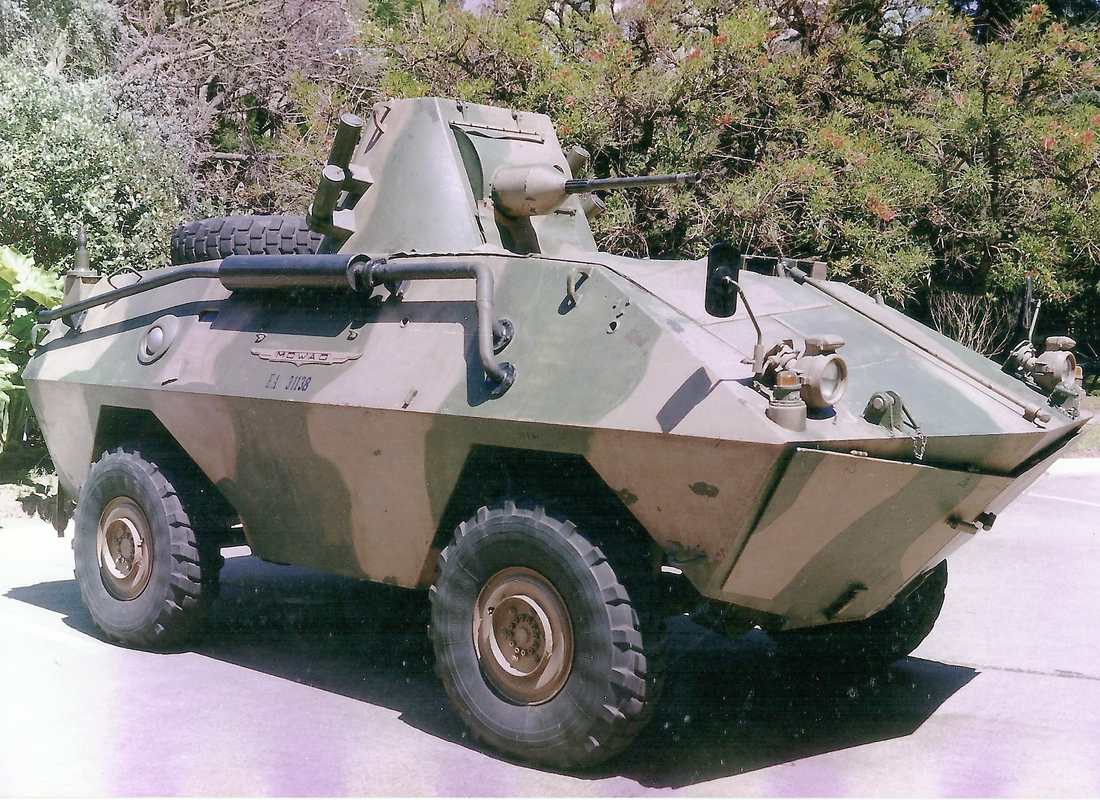
A Mowag Grenadier in its 20mm configuration
In between the versions of the vehicles operated by Argentina, there were:
- Troop carrier (no armament, x1 7.62 or x1 12.7mm)
- Mortar carrier
- Exploration (20mm cannon)
- Commanding unit
The Grenadiers were mechanically reliable, but certain aspects of their design made them hard to service and field, things like internal space, Only manual gearbox (huge issue in uneven ground for unexperienced drivers) and relatively poor fuel efficiency drastically hurt its performance while deployed. Things like this often made the army consider upgrading or replacing certain components from this vehicles, like its engine or the transmission, but this would only be considered after its first deployment.
Their first operational deployment was in 1978, with the major mobilization following the border crisis with Chile they were deployed in the Patagonia by the Army and Marine regiments, on this operation the Grenadier’s performance was seen as unsuited for the role it was assigned to, as all the issued mentioned before made themselves present (this time in a more serious situation). The Grenadiers would be kept around the Patagonia until Papal Intervention made both countries sign a peace treaty and avoid the conflict.
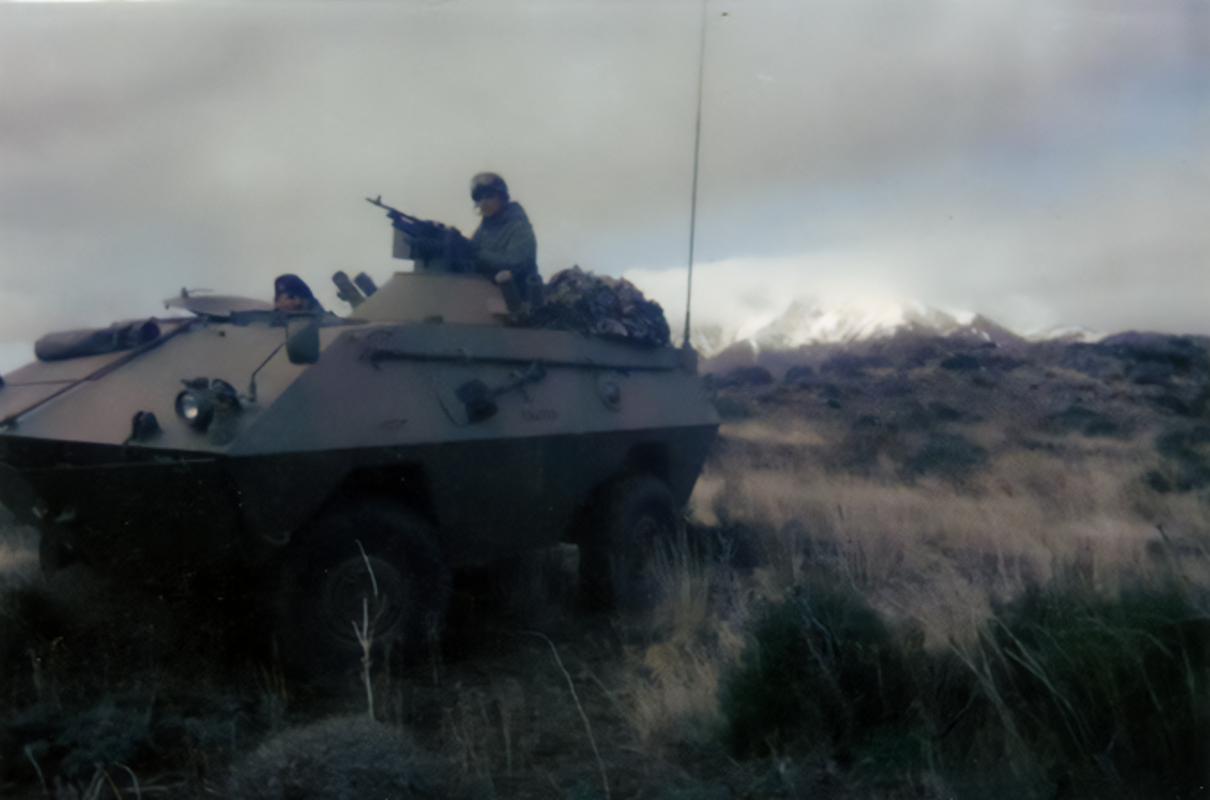
Mowag in the Patagonia
With the same issues and lacking spares for the Grenadiers the Argentine Marines retired the vehicle in 1987, ceding their units to the Argentine Army, at the same time the Argentine police also ceded their Units (some sources state those were Mowag Roland) to the Argentine Army, most of the Marines examples were “cannibalized” to keep others in running order.

During this time its first idea of modernization came in the form of engine change (Deutz diesel) that was never done for monetary reasons.
Their Second deployment was in 1993, when Argentina sent a task force (ARGCON) to help the UN with the situation in Cyprus, along Helicopters and M113s x6 Mowag Grenadiers in UN Livery were sent to take part in UNFICYP (United Nations Peacekeeping Force in Cyprus), this 6 vehicle would serve until 1997 when they were retired by x9 Alvis Tactica purchased for that mission. The Mowag would be kept in service in other roles, as Radar carrier and exploration until 2017 when it was ultimately retired.
Their second deployment, in 1993, saw 6 units in UN livery being used in Cyprus with the Argentine Task force (ARGCON) and by the Permanent Force Reserve until 1997 where they were replace by Alvis Tactica (again room issues inside them were present during their deployment). The Mowag would be kept in service until their definitive retirement in 2017.
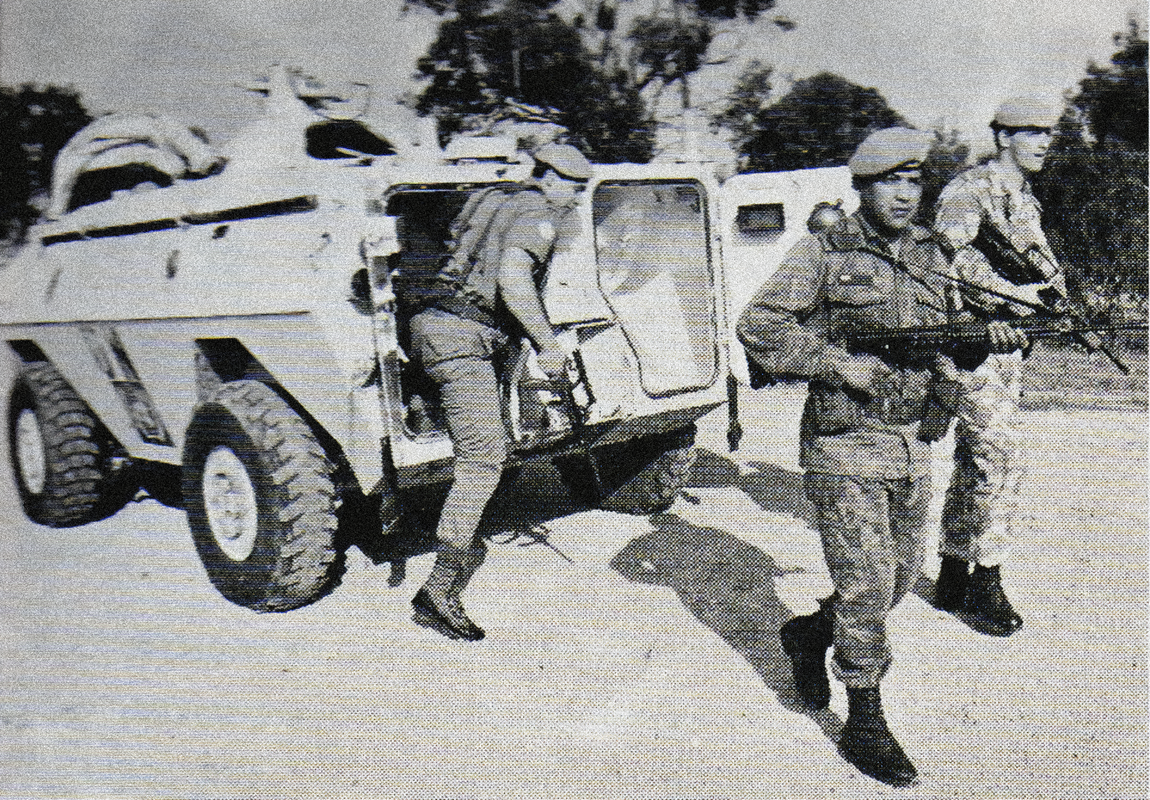
Austrian, Argentine and British Soldiers exiting a Grenadier
TENSA’S Upgrade!:
In between 1987 and 1990 a proposal to upgrade this vehicles was offered by TENSA (Talleres Electromecanicos Norte SA) to the Argentine Army, this upgrade consisted in the addition of a turret (similar to the one in the AML-90) and a range of modifications to accept this turret, thus making the Grenadier an exploration vehicle that would serve along the AML in similar role, although the Grenadier could make use of its amphibious capability. Along the HS Lynx turret there also was the idea to fit a AA turret in the case the vehicle was wanted to be used in that role, although this is supposed to never be fitted to the test Hull.
The modifications would range from:
- The Inclusion of a Hispano Suiza Lynx turret, and with it the 90mm DEFA921 F1 gun.
This was the main Aspect of the upgrade, a major step in firepower gave the Mowag equal firepower to the already in use AML-90.
- The enlargement and further reinforcement of the hull, suspension and shock absorbers to take the weight of the turret.
To fit the Lynx turret it was required to enlarge certain parts of the vehicle, add a “ring” that would be the same diameter as the one in the Turret and remove the seats and other parts inside the vehicle that interfered with the turret’s basket.
- Replacement of the engine for a Diesel Pincher Allison Detroit
- Replacement of the gearbox for an automatic AT545 Allison
- Modifications to the commands for the driver.
In terms of mobility and performance, the old engine was replaced by a much more efficient Diesel powered V8 along with its gearbox, now the vehicle was automatic (or Manual if the driver wanted so), that meant that driving in uneven ground was easier for unexperienced crews and much more safe for the transmission.
- Replacement of the Internal fuel tank and the modification to accept an external one (increase of range up to 800km internal and 1100km with external)
The Original Fuel tank had to be replaced and it was offered that an external fuel tank could be fitted in cases of this vehicles having to travel large distances.
- Addition of 2 more batteries to provide the power to drive the turret.
The Original turret didn’t require electricity, with the Lynx, it was decided to double the amount of power available to have “enough power” to satisfy any electrical requirement inside the vehicle.
- Adoption of the Soptac II FCS (Day and night sight TJN2 90, Laser rangefinder TCV 107, light intensifier + more)
- Night vision for the commander of the vehicle
With the Lynx turret also came a Fire Control System, a system that would let Gunner and Commander work together spotting targets and engaging easily, this system was similar to the one used in the AML-90 while the TCV 107 was also used on the VAPE (other vehicle TENSA worked on).
A later unit supposed to be armed with an AA Turret was also offered, but its unknown if this modification materialized. (SAMM MS 530-F turret)
Spoiler
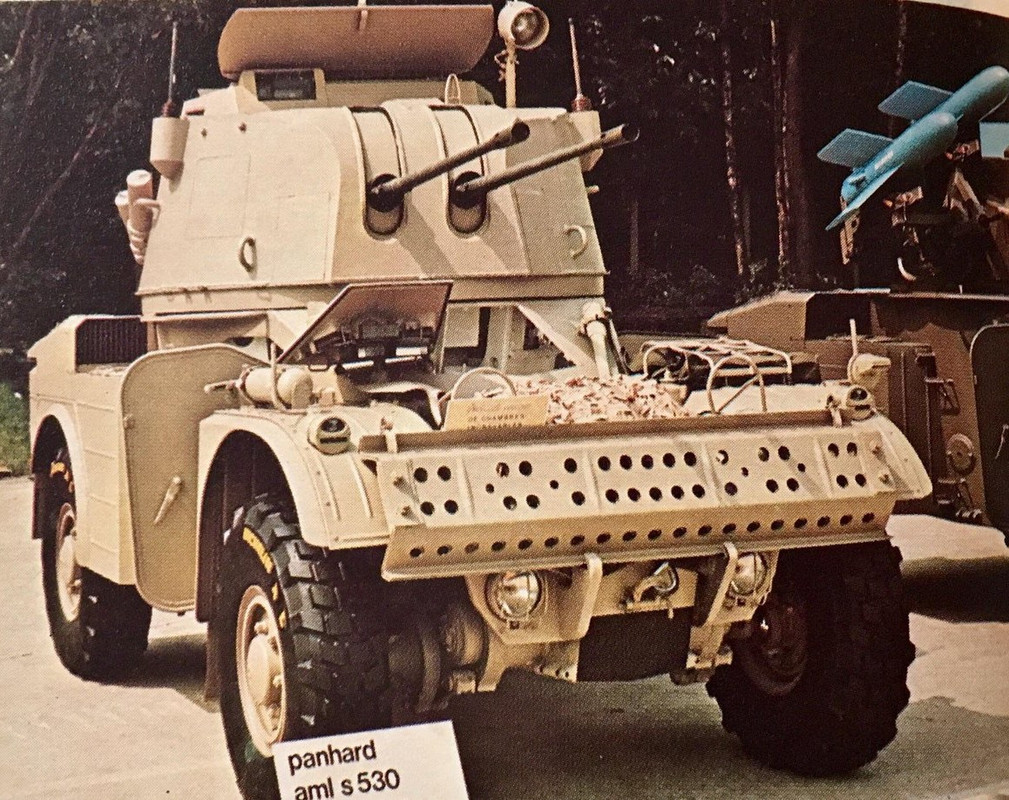
The unit was finished and tested by the Argentine army during the late 80s and the early 90s, as far as the testing went, the Mowag passed most and it saw itself as an equivalent to the already in service AML-90, but issues with its financing and the fact that there was not much need for a platform like this meant that the Mowag program was abandoned. The end of the single prototype is unknown.
Specifications:
Spoiler
Crew: 3
Commander
Driver
Gunner
Weight:
Loaded weight: 6950 Kg
Dimensions:
Length: 5.32m
Width: 2.5m
Height: 1.9m
Mobility:
Power to weight ratio: 23.2 HP/ton
Max speed on road: 100 Km/h
Max speed on water: 10 Km/h (Approx.)
Max speed on uneven ground 45 Km/h (Approx.)
Maximum elevation:
Frontal: 60%
Side: 30%
Amphibious
Engine:
DDA Fuel Pincher Allison Detroit 8,2 Lt.
Power: 154 Hp at 3000 RPM.
Armament:
Gun: DEFA 921 F1
Caliber: 90mm
Ammo:
OCC 60-62 (HEAT)
OE 90 F1 (HE)
Smoke (?)
Ammo Capacity: 21 shots ready rack (?)
Turret’s mobility: 360º
Elevation/Depression: +35º/-8º
Secondary armament: x1 7.62 Machine gun (turret)
Ammo 2000 rounds.
Optics:
Commander: TJN2 90 ( Day and night, Zoom x6)
Armor:
2-15mm max
Other:
4 Smoke launchers (2 reloads)
Laser Rangefinder (TCV 107)
Tensa’s brochure for this vehicle, thankfully it lists most of its specs of the Upgrade compared to the regular Grenadier.
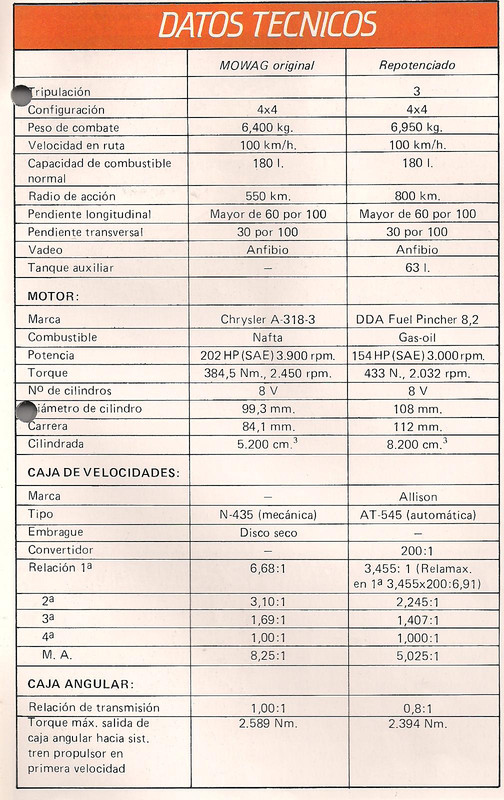
Images
Spoiler
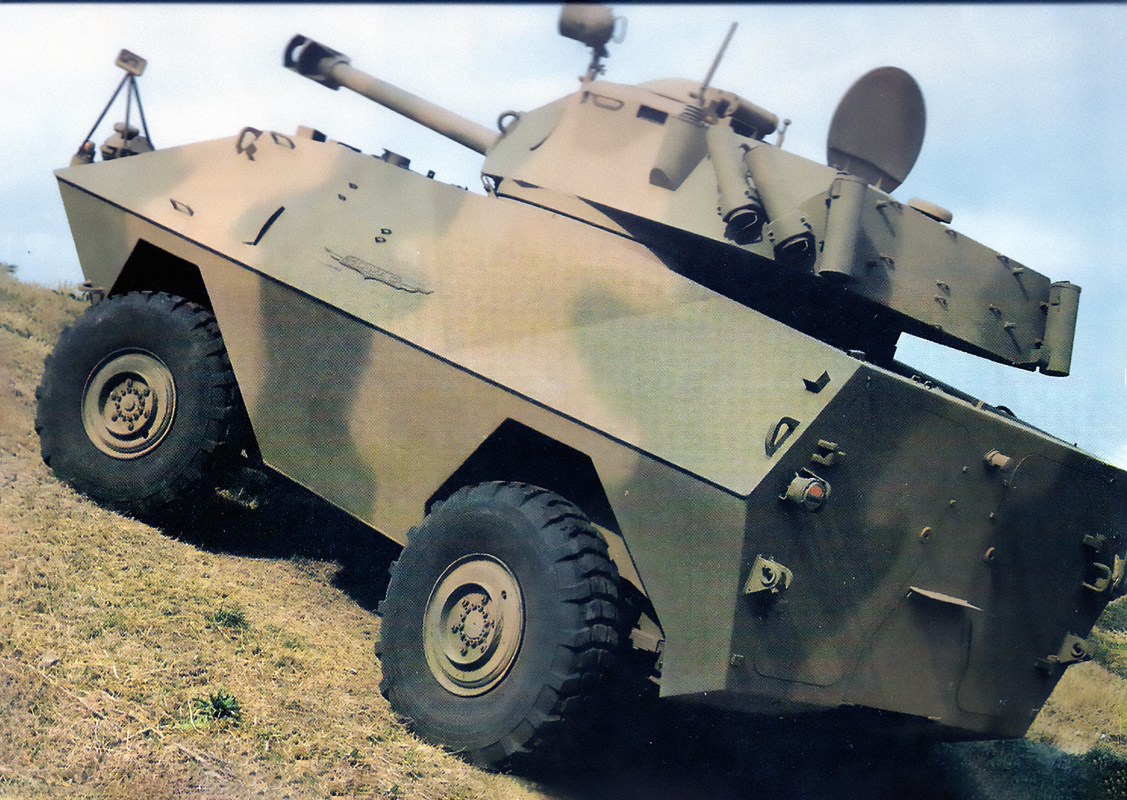
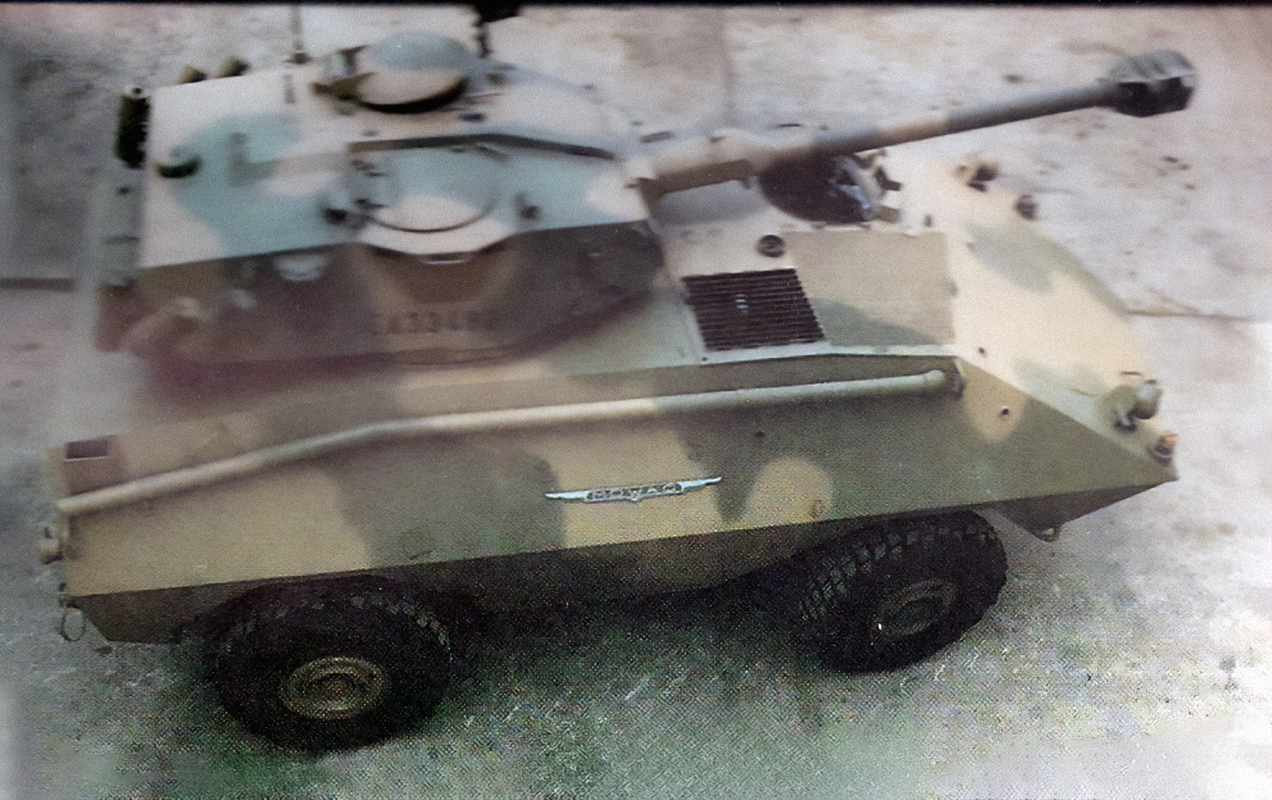
Sources:
Spoiler
Sites:
https://es.wikipedia.org/wiki/Mowag_Grenadier
Desarrollo y Defensa: Mowag Grenadier
Desarrollo y Defensa: Proyecto pendiente: Modernización del Mowag argentino
Proyecto Pragmalia: 282. Modernización del Vehículo Mowag Grenadier
Books/Magazines
Defensa Magazine (Spain, Issue 103)
Blindados Argentinos de Uruguay y Paraguay- Sigan Fogliani
ARES Magazine- Nro 4
TENSA’s Brochure of the MOWAG REPOTENCIADO (incomplete)













